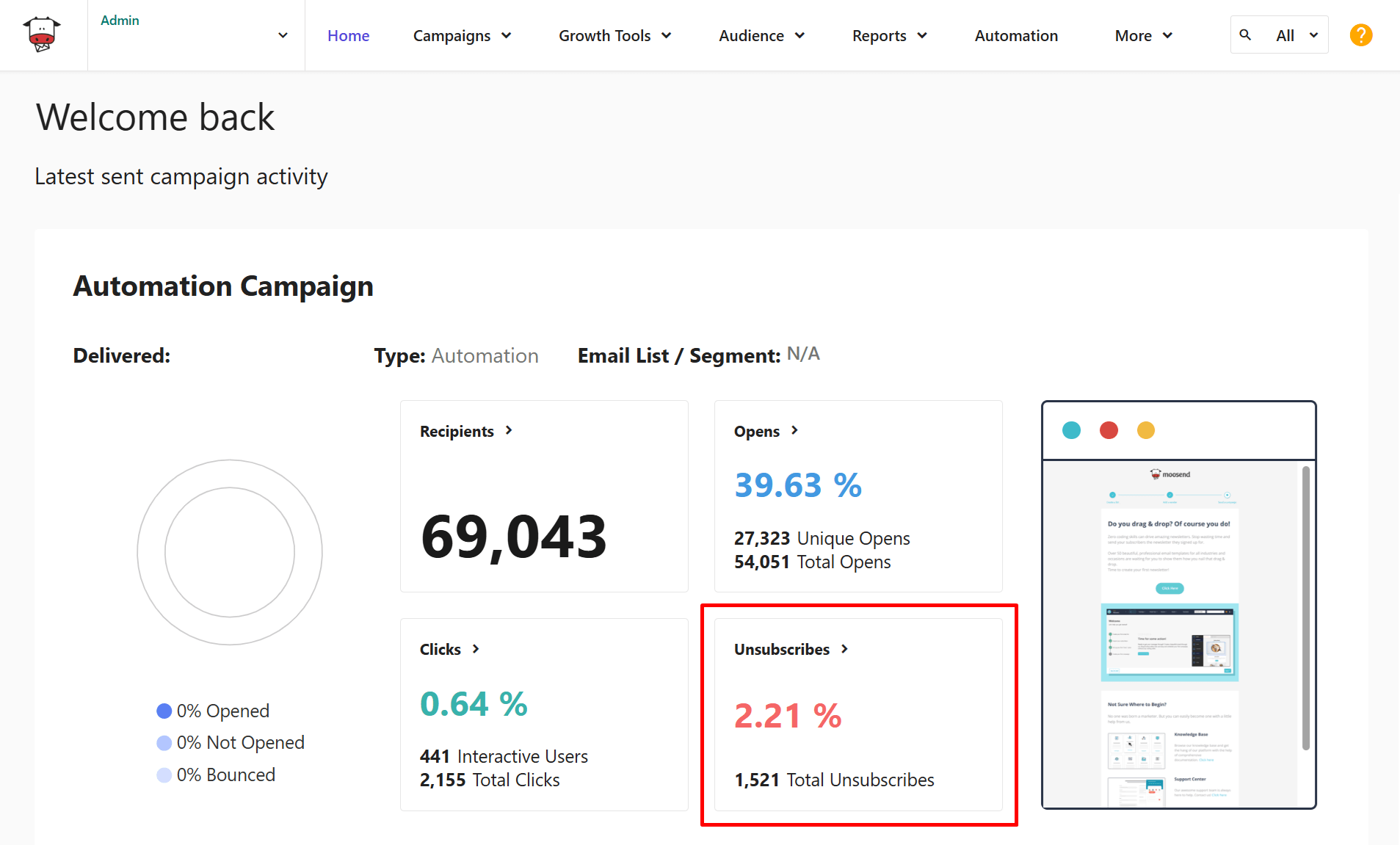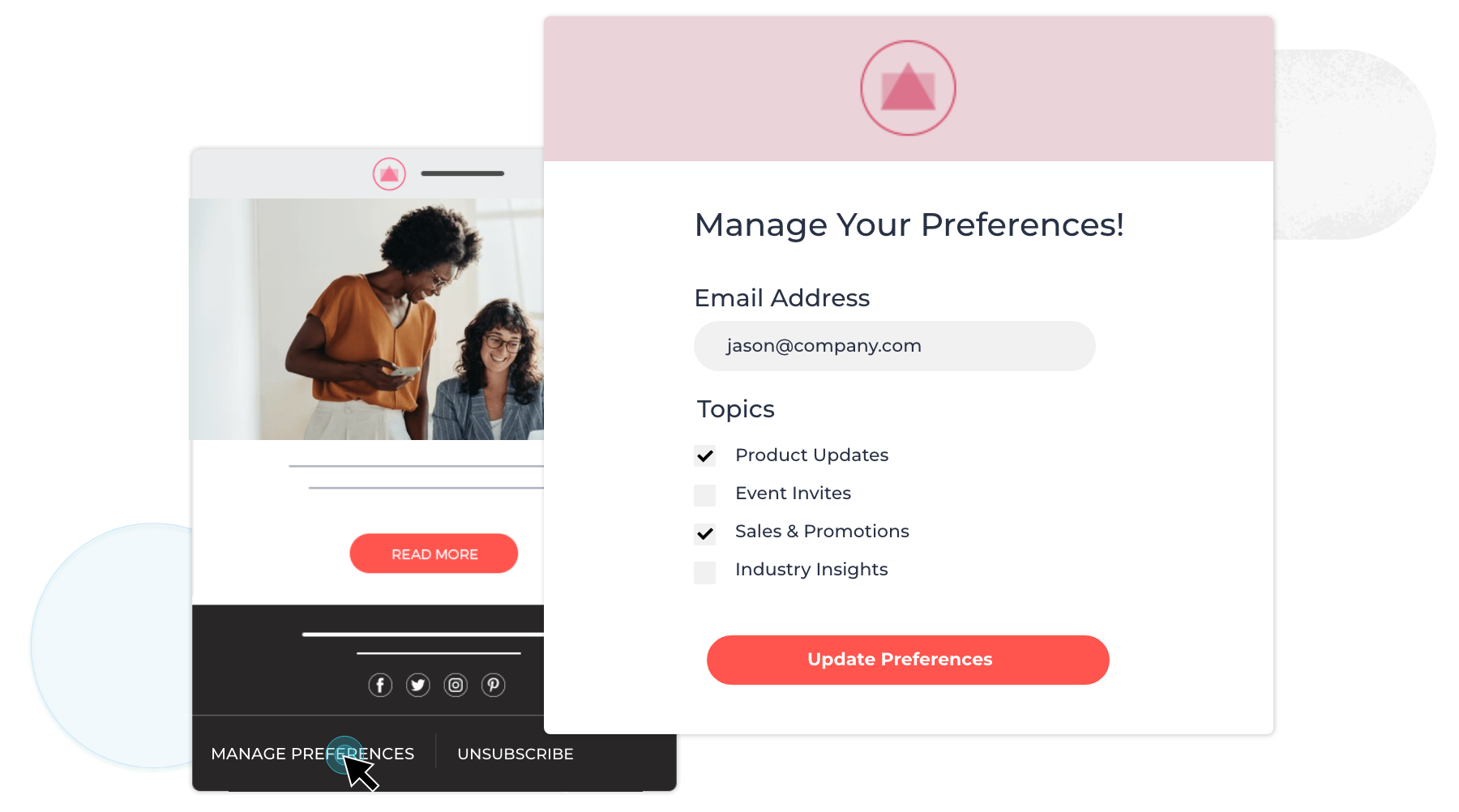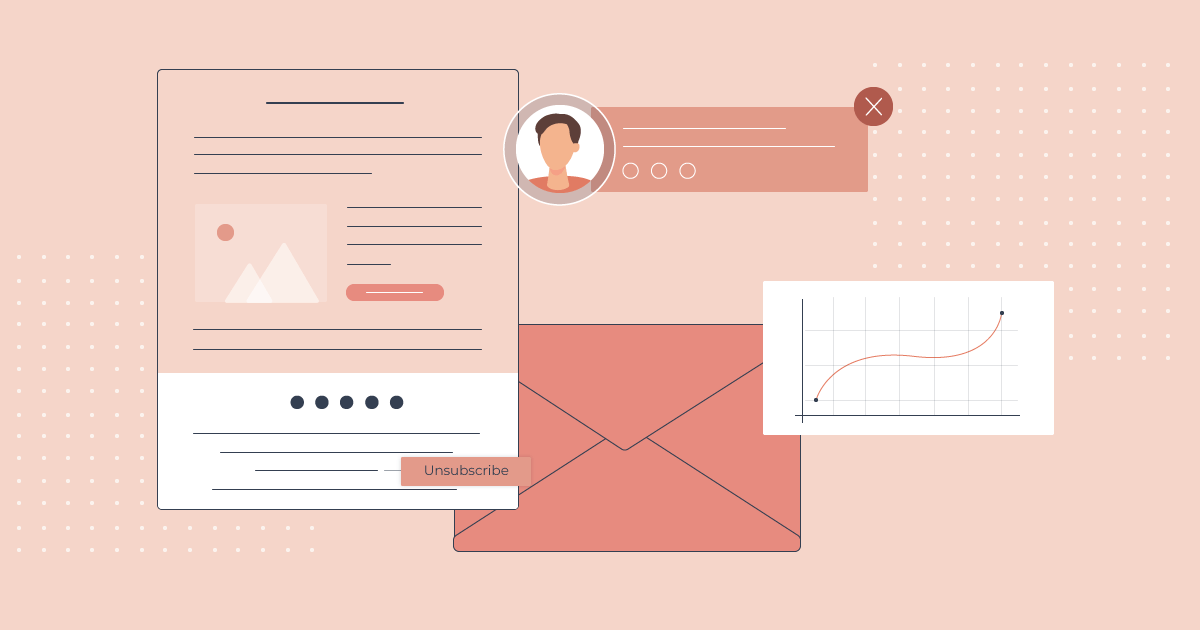
Unsubscribes Are a Win, Not a Warning
You sent an email campaign you were proud of. The layout was clean, the copy was smart, and the offer was spot on. Timing had been triple-checked and everything felt just right.
After some time, you checked your metrics and there it was. A small but painful number next to the word no one likes to see: unsubscribes. People had left the list.

It was hard not to take it personally. You wondered if you had overstepped, annoyed, or bored them into leaving. But what if that wasn’t rejection but a win?
Unsubscribes may sting, but the thing is that not every contact is meant to stay forever. In fact, some of the best emails you’ll ever send are the ones that make the wrong people walk away.
The Vanity Metric Trap: Why a Bigger List Isn’t Always Better
In email marketing, you can easily fall for big numbers. In fact, we’re conditioned to chase growth. A growing email list feels like progress, and a high open rate looks like success. But without context, these metrics can be dangerously misleading.
An oversized list full of disengaged contacts doesn’t help your business; it hurts it. How? Opens from uninterested recipients, clicks out of curiosity (not intent), and deliverability issues from inactive subscribers, all distort your data. Worse, they create a false sense of success, encouraging you to stick with campaigns that aren’t truly working.
Chasing big numbers can also lead to bad habits, such as sending emails more frequently just to stay visible or diluting your message to appeal to everyone. These tactics might keep your list size looking healthy on paper, but they quietly erode your strategy.
The truth? A smaller, more engaged list outperforms a larger, indifferent one. Marketers fixated on list size end up writing for ghosts, chasing numbers that don’t convert.
Unsubscribes might shrink your numbers, but they sharpen your focus, pushing you to prioritize quality over quantity.
What Unsubscribes Really Mean
For most marketers, unsubscribes feel like a door closing. But in reality, it’s more like a window opening, giving you a clearer view of who actually wants to be in the room. When someone leaves your list, they’re telling you something valuable: “This isn’t for me.” And that’s not just okay; it’s helpful.
They filter your audience for you
Think of unsubscribes as a built-in cleaning mechanism. You don’t have to chase disengaged readers or waste time crafting re-engagement campaigns that may never land. They’ve made the decision for you, saving you time, budget, and false hope.
They help you focus on the right people
When you stop trying to please everyone, you can start delighting the right audience. That shift alone can do wonders for your strategy (and your sanity).
So instead of chasing numbers that mask disengagement, let unsubscribes point you toward what your true audience cares about and deliver more of that.
They protect your email deliverability
Every unsubscribe is a small safeguard for your sender reputation. When people opt out, they’re less likely to mark your emails as spam or disengage silently.
Both of those could hurt your sender reputation and deliverability over time. In this way, unsubscribes act as a “release valve,” helping you maintain trust with inbox providers and with the people who actually want to hear from you.
The Hidden ROI of Unsubscribes
Here’s a truth we don’t talk about enough: every unsubscribe saves you something.
First, it saves you money, especially if you’re paying by the number of contacts. Keeping people on your list who never buy, click, or even open your emails doesn’t just waste space; it wastes budget.
A clean email list cuts unnecessary costs. And for growing businesses, that can be the difference between spending and burning your budget.
Then there’s the operational upside. A list of genuinely interested subscribers gives you clearer data. Your opens, clicks, and conversions aren’t affected by disinterest. This means your insights are sharper and your A/B tests are more reliable.
And finally, there’s the emotional ROI. That relief of no longer writing for people who don’t care. The confidence that comes from speaking to an audience that chose to stay. That clarity replaces anxiety with purpose. And that’s when your best work happens.
Because when you’re no longer trying to keep everyone, you start creating better emails for the ones who matter.
How to Make Peace with (and Learn from) Unsubscribes
Making peace with unsubscribes doesn’t mean ignoring them. It means approaching them with curiosity instead of fear.
Start by looking for patterns. Did unsubscribes spike after a specific send? Was it the subject line, the content, the timing, or the frequency? Are certain segments opting out more than others?
These clues can guide everything from your content strategy to your email calendar. For instance, if emails are going out too often, try a lighter schedule. If engagement is low, dig into why. Maybe it’s time to revisit your segmentation. Or better yet, let your audience do it for you.
This is where preference centers come in. Instead of a one-click unsubscribe that forces an all-or-nothing choice, preference centers give subscribers more control. They can choose how often they hear from you, e.g., weekly, monthly, or only for product launches. Or they can pick topics they care about, like newsletters, discounts, or product updates, and skip what doesn’t interest them.

This level of personalization does two things: it respects your subscribers’ time and interests, and it helps your brand stay relevant without overwhelming them. And since irrelevant content is one of the leading causes of unsubscribes, preference centers can directly reduce opt-outs
Over time, brands that offer options instead of ultimatums tend to see fewer unsubscribes. A preference center has the power to turn a potential goodbye into a more personalized “yes,” on their terms, not yours.
Unsubscribes are a Signal, not a Setback
Nobody likes to lose subscribers. It’s natural to feel uneasy when that number goes up. But in email marketing, growth isn’t just about keeping more; it’s about keeping the right people.
Unsubscribes aren’t a judgment on your brand. They’re a signal that someone wasn’t the right fit for your message right now, and that’s okay. Because when the wrong people leave, the right ones become easier to see, understand, and engage.
So, the next time you spot an unsubscribe, don’t see it as a failure. See it for what it really is: progress.




 Published by
Published by

